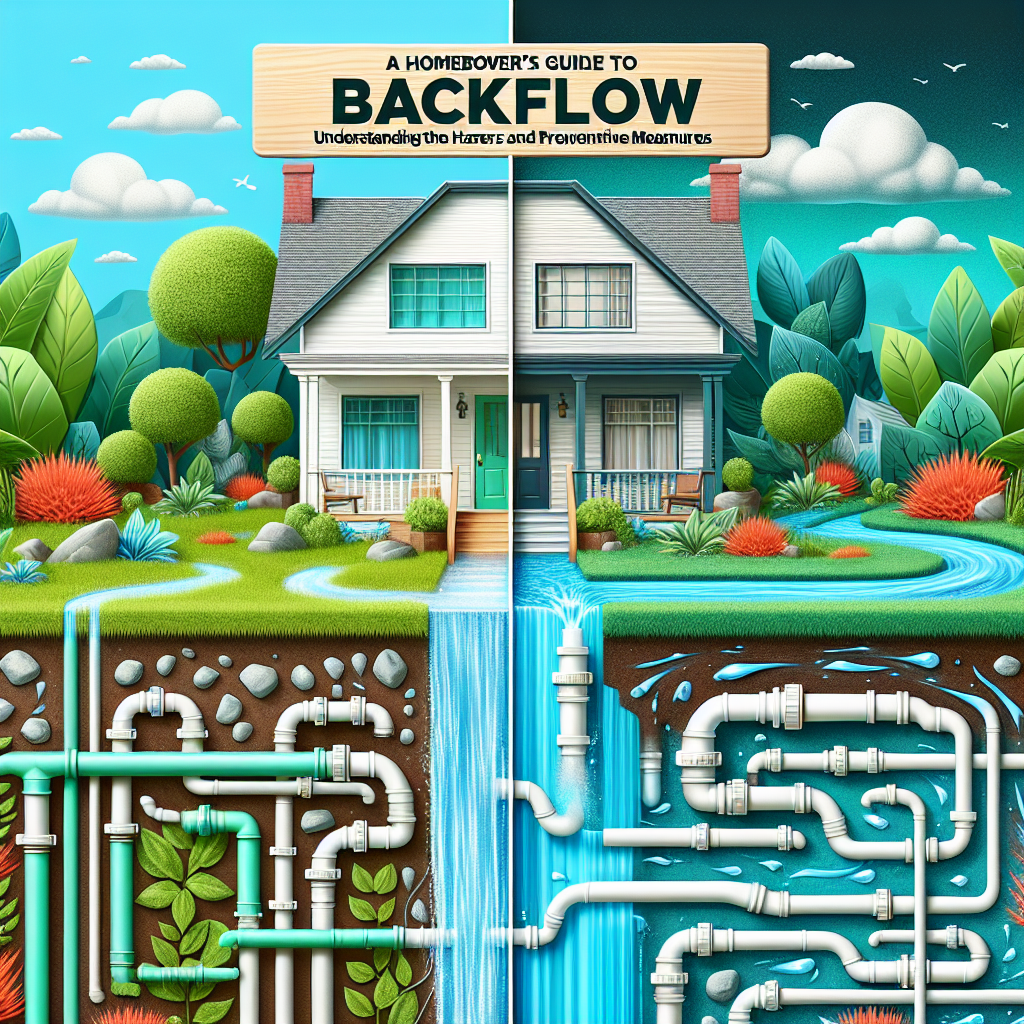As a homeowner, ensuring the safety of your family and the integrity of your property is paramount. One often overlooked yet crucial aspect of home maintenance is backflow prevention. Though it may sound technical, understanding backflow can save you from potential health hazards and costly repairs. In this guide, we delve into what backflow is, the hazards it presents, and essential preventative measures you can take.
What is Backflow?
Backflow is a plumbing term that refers to the unwanted reverse flow of water or mixtures of water and other substances into the potable (drinking) water supply. It occurs when there is a change in pressure within the plumbing system, causing contaminated water from external sources, like irrigation systems, to flow back into clean water lines.
Types of Backflow: Understanding the Differences
There are primarily two types of backflow:
-
Backpressure: This occurs when the pressure in the downstream system exceeds the pressure in the supply system. Often caused by pumps or thermal expansion, this situation can push contaminated water back into the clean water supply.
- Backsiphonage: This is most commonly caused by a negative pressure in the supply system (similar to a straw effect). For example, if there’s a sudden drop in pressure due to a main break, it can cause nearby contaminated water to be siphoned back into clean lines.
The Hazards of Backflow: Why It Matters
Health Risks
The most pressing concern regarding backflow is the potential health risks it poses. Contaminated water can introduce harmful pathogens, chemicals, and toxins into your drinking water supply. This can lead to serious illnesses, gastrointestinal issues, and even acute diseases.
Property Damage and Financial Loss
Beyond health risks, backflow can also cause significant property damage. Contaminants can corrode pipes, damage appliances, and lead to costly repairs or replacements. The cleaning and restoration process can be time-consuming, resulting in a financial burden for homeowners.
Legal Implications
In many municipalities, failing to implement proper backflow prevention measures can lead to legal consequences, including fines and mandatory corrective actions. Homeowners must abide by local plumbing codes and regulations to avoid such drawbacks.
Preventative Measures: Protecting Your Home from Backflow
Ensuring that your home is protected from backflow is easier than it may seem. Here are several proactive measures homeowners can take:
1. Install Backflow Prevention Devices
Investing in backflow prevention devices is perhaps the most effective measure you can take. Common types include:
- Reduced Pressure Zone (RPZ) Valves: Designed to protect against both backpressure and backsiphonage, these valves are ideal for high-risk areas like industrial sites.
- Double Check Valves: Suitable for moderate hazards, these valves allow for some backpressure prevention.
- Atmospheric Vacuum Breakers: Perfect for non-potable applications like irrigation, these prevent backsiphonage effectively.
2. Regular Inspections and Maintenance
Just like any other system in your home, regular monitoring and maintenance of your backflow prevention devices are essential. Schedule annual inspections with a licensed plumber to ensure that your devices are functioning properly.
3. Understand Local Codes and Regulations
Become familiar with local plumbing codes regarding backflow prevention. Some communities may have specific requirements based on the type and size of your plumbing system. Staying informed will help you avoid legal issues and ensure compliance.
4. Take Care of Your Landscaping
Maintaining your landscaping can also prevent backflow risks. Ensure that irrigation systems are installed correctly, with proper drainage and distance from non-potable water sources.
5. Be Mindful of Sudden Pressure Changes
Be cautious when making plumbing changes or during emergencies. Sudden pressure changes can create backflow situations. It’s wise to turn off main water supplies during repairs to minimize these risks.
Conclusion: Securing Your home from Backflow Risks
As a homeowner, your priority should always be the safety and well-being of your family. Understanding backflow and its potential hazards is the first step in protecting your home’s water supply. By implementing preventative measures and working closely with plumbing professionals, you can mitigate the risks of backflow and secure your home against unforeseen plumbing issues.
Staying informed and proactive ensures that your home remains a safe haven for you and your loved ones, allowing you to enjoy life with peace of mind.


